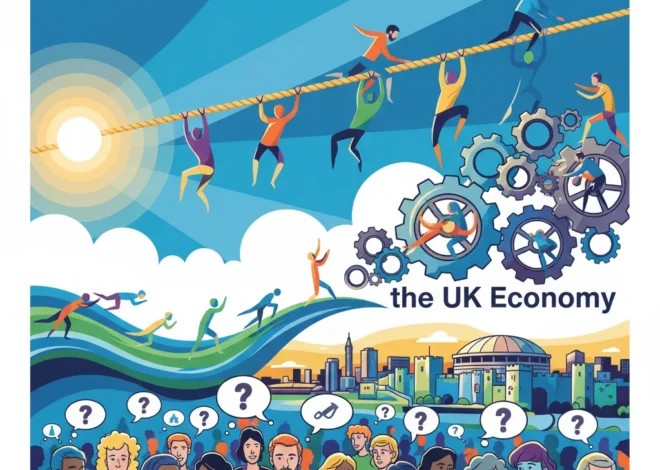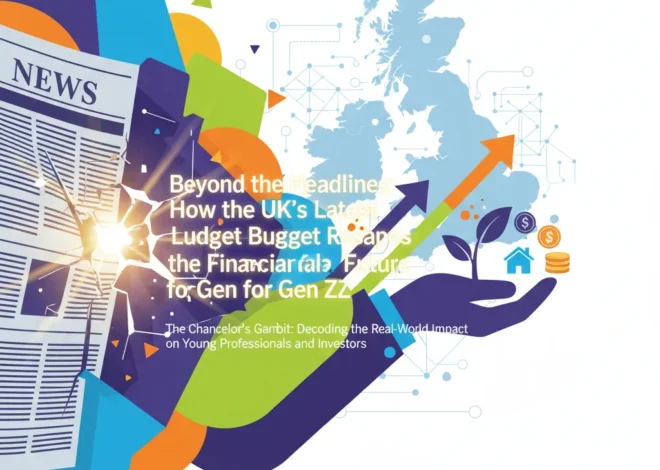
The UK Budget’s Double-Edged Sword: A Deep Dive into Winners, Losers, and the Economic Fallout
The Human Cost of Fiscal Policy: Beyond the Headlines
Every year, the UK Chancellor of the Exchequer stands before Parliament to deliver the Budget, a speech filled with macroeconomic forecasts, fiscal adjustments, and policy pronouncements. For those in the worlds of finance, investing, and economics, it’s a pivotal moment that can shift market sentiment and alter growth projections. Yet, behind the complex jargon and sweeping statements lies a simpler truth: for millions of households, the Budget is not an abstract economic exercise. It’s a real-world calculation that determines the food on their table, the heating in their homes, and their financial security for the year ahead.
The recent Spring Budget was a masterclass in this duality. On one hand, it delivered headline-grabbing tax cuts. On the other, it relied on the silent, creeping effect of frozen tax thresholds. The result is a complex and often contradictory landscape of financial winners and losers. As one part-time worker earning £20,000 told the BBC, despite the cuts, “we will pay more tax.” This sentiment captures the core paradox of the current fiscal strategy. This analysis will dissect the key announcements, moving beyond the political soundbites to explore the tangible impacts on individuals, the strategic implications for investors, and the long-term trajectory of the UK economy.
The Great Giveaway? Deconstructing the National Insurance Cut
The centerpiece of the Budget was undoubtedly the 2p cut to National Insurance (NI) contributions for both employees and the self-employed. This move, following a similar cut in the Autumn Statement, was positioned as a direct boost to the pockets of 29 million working people. For a self-employed individual earning £30,000, this translates into a tangible annual saving, a welcome relief in a high-cost environment. As one such individual noted, the savings help offset the rising costs of running a business.
From an economic standpoint, the logic is straightforward: cutting taxes on labour is intended to incentivize work and boost consumer spending. By increasing the disposable income of millions, the government hopes to stimulate demand, providing a much-needed jolt to a sluggish economy. This has direct implications for the stock market, particularly for consumer discretionary stocks in sectors like retail, hospitality, and leisure, which are highly sensitive to household spending patterns.
However, the impact is not uniform. Below is a simplified breakdown of the estimated annual savings from the 2p NI cut for employees at various income levels.
| Annual Salary | Estimated Annual NI Saving |
|---|---|
| £20,000 | ~£149 |
| £35,000 | ~£449 |
| £50,000 | ~£749 |
| £75,000 | ~£754 |
Note: Figures are approximate and for illustrative purposes.
While these savings are not insignificant, they exist within a much larger, and less favourable, context. The story of the NI cut is only half told without understanding its silent, insidious counterpart: fiscal drag.
The Summers-Epstein Nexus: A Sobering Lesson in Reputational Risk for Finance and Leadership
The Stealth Tax: How Fiscal Drag is Quietly Draining Your Wallet
Fiscal drag is a term that every taxpayer, investor, and business leader should understand. It occurs when tax thresholds—the income levels at which you start paying tax or move into a higher bracket—are frozen, while wages rise with inflation. The result? More of your income is pushed into higher tax bands, and people who previously earned too little to pay tax are dragged into the system. This effectively increases the nation’s tax take without the government having to announce a formal tax hike.
This is precisely why the part-time worker earning £20,000 finds herself worse off. Her modest pay rise, designed to keep pace with the cost of living, pushes more of her earnings above the frozen personal allowance threshold of £12,570. The small gain from the NI cut is completely erased by the larger loss from paying more income tax. According to the Office for Budget Responsibility (OBR), this phenomenon will create millions of new taxpayers by the end of the forecast period. This “stealth tax” is the primary reason why the UK’s overall tax burden is projected to reach its highest level since the 1940s, despite recent cuts.
A Fix for the Middle: Reforming the Child Benefit Charge
One of the most technically complex but socially significant changes was the reform of the High Income Child Benefit Charge (HICBC). Previously, the system created a harsh “cliff edge,” where a single parent earning £50,001 would begin to lose their Child Benefit, while a couple each earning £49,999 (a combined £99,998) would keep it in full. This was widely seen as unfair and a penalty on single-earner households.
The Budget addressed this by raising the threshold and smoothing the taper rate. This change provides substantial relief for middle-to-high-income families. For instance, a family with one earner on £65,000, who previously would have lost all their Child Benefit, will now get to keep a significant portion of it. As one family in this situation explained, this change makes a “big difference” to their monthly budget.
Here’s a comparison of the old and new HICBC systems:
| Feature | Old System | New System (from April 2024) |
|---|---|---|
| Threshold | £50,000 | £60,000 |
| Taper End Point | £60,000 | £80,000 |
| Taper Rate | 1% of benefit for every £100 over £50k | 1% of benefit for every £200 over £60k |
| Future Plans | Based on individual income | Consultation to move to a household-based income system by April 2026 |
This policy shift not only corrects a systemic flaw but also injects liquidity into the budgets of a demographic with a high propensity to spend on goods and services, potentially benefiting the broader economy. This is a targeted fiscal stimulus that could support sectors favoured by families, from leisure and travel to education and retail.
Geopolitical Chess at COP30: How Brazil's Climate Diplomacy is Reshaping Global Finance
The Wider Implications for Investing, Technology, and the Economy
A national budget is more than a collection of individual policies; it’s a signal of intent that reverberates across financial markets and industries. For investors and business leaders, the key is to interpret these signals and position accordingly.
1. The Investing Landscape
The mixed messages of the Budget create a nuanced outlook for the stock market. While the NI cut and Child Benefit reform may boost consumer-facing stocks, the overarching pressure of fiscal drag could temper consumer confidence in the long run. Furthermore, the government’s need to fund these cuts through borrowing will keep a close eye on the gilt market and the UK’s overall debt-to-GDP ratio. Investors engaged in active trading will need to be mindful of this underlying tension between short-term stimulus and long-term fiscal constraint.
2. The Future of Financial Technology (Fintech)
Complexity in the tax system is often a catalyst for innovation in financial technology. The changes to NI and Child Benefit, coupled with the ongoing reality of fiscal drag, create a greater need for sophisticated personal finance tools. We can expect to see growth in fintech applications that help individuals with tax optimization, real-time income forecasting, and managing complex household budgets. The planned move to a household-based income system for Child Benefit, in particular, will require new data-sharing and calculation tools, representing a clear opportunity for the UK’s vibrant fintech sector.
3. Attracting Global Talent and Capital
The Budget also included significant changes to the “non-dom” tax regime, which affects wealthy foreign nationals living in the UK. While this aims to raise revenue, it also alters the UK’s attractiveness as a hub for international talent and capital. This is particularly relevant for nascent, highly mobile industries like blockchain and AI. As global entrepreneurs and developers in these fields weigh their options, the UK’s tax policy for high earners becomes a critical factor. Striking the right balance between fairness and competitiveness is essential to ensure the UK remains a premier destination for innovation in areas like decentralized finance and other emerging technologies.
The Nvidia Paradox: Why AI Supremacy is a Double-Edged Sword for Investors
Conclusion: A Budget of Calculated Contradictions
The Spring Budget is a document of calculated contradictions. It offers immediate, tangible relief to millions of working people through NI cuts while simultaneously increasing the overall tax burden through the silent mechanism of fiscal drag. It corrects a long-standing unfairness in the Child Benefit system, aiding many middle-class families, while offering little to those outside the workforce, such as pensioners who feel “completely forgotten.” (source)
For the average citizen, the net effect on their finances will depend entirely on their specific circumstances—their income level, family structure, and employment status. For professionals in finance, banking, and investing, the takeaway is clear: the UK’s economic path is defined by a delicate and potentially unsustainable balancing act. It’s a pre-election budget designed for short-term appeal, but its long-term consequences for public finances, economic growth, and the UK’s investment landscape will unfold for years to come.

